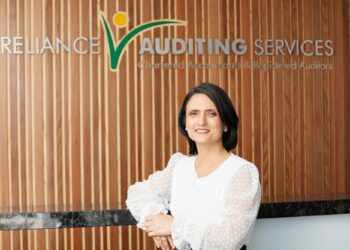The case, Frigger v Trenfield (No 10) [2021] FCA 1500, is one of a series of cases involving the same parties and examines a number of issues.
It involves a wife and husband, Angela and Hartmut Frigger, the applicants in the case, and their SMSF, the Frigger Super Fund (FSF). At the time of making their application, Angela and Hartmut Frigger were undischarged bankrupts.
View Legal director Matthew Burgess explained that while much of the decision in this case focused on dissecting the evidence, which was in many cases “undermined by conflicting statements and numerous examples of doctored or forged documentation by the trustees of the SMSF”, there are also some key reminders for all SMSF trustees and their advisers.
One of the main issues determined in the decision was whether certain assets were held in the SMSF. The court noted that under 116(1)(a) of the Bankruptcy Act, “all property that belonged to, or was vested in, a bankrupt at the commencement of the bankruptcy, or has been acquired or is acquired by him or her, or has devolved or devolves on him or her, after the commencement of the bankruptcy and before his or her discharge … is property divisible amongst the creditors of the bankrupt”.
The applicants sought to rely on s 116(2)(d)(iii)(A) of the Bankruptcy Act as an exception to this, which provides that “s 116(1) does not extend to certain specified kinds of property, including ‘the interest of the bankrupt in … a regulated superannuation fund”.
The court determined that the applicants had failed to establish that the disputed assets, which included bank accounts, shares held in a share portfolio and two parcels of residential land, were held on the terms of FSF for the beneficiaries of the FSF.
In his decision, Justice Darren John Jackson explained that the applicants had failed to observe the numerous strictures found in the FSF Deed and the laws surrounding superannuation as to the keeping of records and keeping superannuation assets separate.
“They should have prepared balance sheets recording the holding of the disputed assets, and had those balance sheets independently audited, in a timely way,” said Justice Jackson.
He also noted that the applicants had opened high-interest websaver accounts, which they claimed did not permit a trust capacity to be recorded in the account name. Justice Jackson stated that if the trustees did open accounts of this kind, they should have “recorded their status as FSF assets clearly in a separate, contemporaneous document”.
He also highlighted the fact that the applicants had used a Bankwest bank account, which they claimed was the main operating account of the SMSF, to run a business that was not an FSF asset. They also used this account to pay personal expenses.
“They should [also] not have used a share trading account which they had previously operated in their own personal capacities to acquire investments for the FSF.”
Justice Jackson said that while it may be easy to disregard these strictures when administering the affairs of an SMSF, the applicants “must bear the consequences”.
“Any recognition, by the law, of an asset as a superannuation fund asset would affect numerous third parties, including the revenue of the Commonwealth and, here, the creditors of bankrupt estates. So the strictures that come with that recognition, as inconvenient as they may be, need to be observed.”
The consequences for the trustees in this case, Mr Burgess explained, included having penalties imposed by the ATO and assets, which were argued by the trustees to be protected on bankruptcy of the members, “to instead be available to their creditors”.
Mr Burgess said this decision highlights the importance of complying with Section 34(1) of the SIS Act, which provides that each trustee of a superannuation entity must ensure that the prescribed standards applicable to the operation of the entity are complied with at all times.
“SIS Regulation 4.09A(2) contains the following prescribed standard (as permitted by section 31(1) of SIS) – a standard also captured by section 52(2)(g) of SIS:
“A trustee of a regulated superannuation fund that is a SMSF must keep the money and other assets of the fund separate from any money and assets, respectively:
(a) that are held by the trustee personally; or
(b) that are money or assets, as the case may be, of a standard employer-sponsor, or an associate of a standard employer-sponsor, of the fund,” Mr Burgess stated.
“The court confirmed that any SMSF trustee wishing to comply with this requirement will be careful to ensure that any assets that are part of the SMSF are clearly identified as such.”
Mr Burgess said trustees should ensure that formal records of ownership of fund assets clearly note the trustee capacity in which assets are held and that fund assets are not held in the name of only one of the trustees, particularly where the trustees are individuals who are likely also to hold assets in a personal (non-trustee) capacity.
The court also determined that properties that the applicants claimed were contributed to the fund as in-specie transfers with no consideration being paid were not assets of FSF.
Justice Jackson noted that even if the properties had been contributed to the fund, this would have been illegal, and the trustees of the FSF would have been required not to accept them.
The court also confirmed that while there are exceptions to the prohibition on SMSFs acquiring assets from a member under section 66(2) of the SIS, this does not mean the matters in exception are incorporated as part of the prohibition, Mr Burgess explained.
“Rather, section 66(2) are excuses or justifications for what would otherwise be prohibited,” he stated.
“This means that the onus of establishing that validity of any contribution (for example, of business real property at market value) rests with the members.”
You can access further analysis on this case here.
**Editor’s note*** This decision is currently being appealed



the regulators have not been in touch with the auditors, because the judgment is a stitch-up and is being appealed. Angela Frigger
I expect the regulator will be in touch with the Auditors of the fund